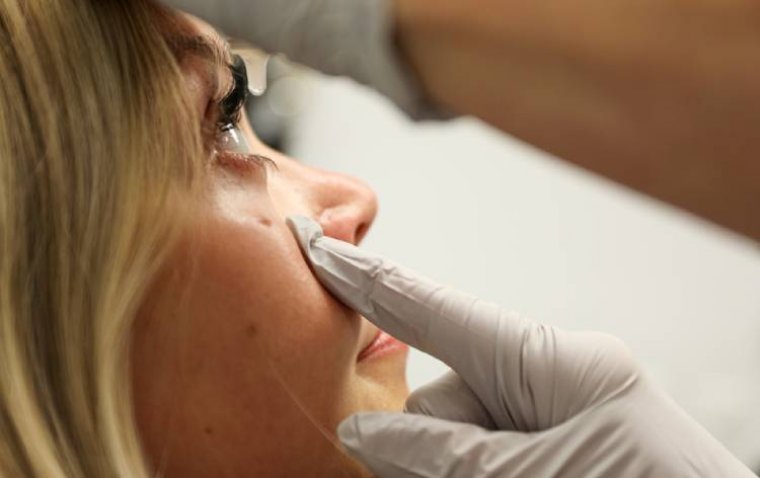
Researchers Unveil Link Between Proteins in Tears and Pain After Eye Surgery
In a study published in the Journal of Proteome Research, researchers from Oregon Health & Science University (OHSU) have identified a connection between specific proteins found in patients' tears and persistent pain experienced months after eye surgery. This discovery could pave the way for new screening tools and treatments for patients suffering from post-surgical eye pain.
Sue Aicher, Ph.D., a corresponding author on the study and a professor of chemical physiology and biochemistry in the OHSU School of Medicine, emphasizes the significance of their findings. “A lot of people think tears are just salt water, when in fact we are able to detect thousands of proteins in human tears,” said Aicher. “It is such a rich proteome, and those proteins may impact the activity of nerves at the surface of the eye in the cornea.
Study Methodology and Findings
The study involved 120 participants from Miami and Portland, all of whom reported no eye pain prior to undergoing refractive surgery. Three months post-surgery, the researchers collected tear samples using a non-invasive method involving a thin filter paper placed beneath the lower eyelid. This technique, already used in clinical settings for diagnosing conditions like dry eye disease, allowed the researchers to analyze the protein composition of tears.
Among the participants, 16 reported persistent pain, while 32 did not. By comparing the protein profiles in the tears from both groups, the researchers identified 2,748 proteins. The analysis revealed that the protein patterns in individuals with long-term pain differed from those without. Notably, examining the interactions between three or four proteins was more effective in predicting pain than analyzing a single protein alone.
Brooke Harkness, O.D., M.S., FAAO, the study’s lead author and an assistant professor of ophthalmology at OHSU Casey Eye Institute, finds these results promising. “Many of these differential proteins are involved in pathways of the immune system, inflammation, and damage to the corneal nerves,” Harkness said. “So, it’s not a random mix of proteins, but a pattern that we’re seeing. I think that’s pretty exciting.”
Potential for Predictive Tools and Treatments
The bioinformatics team, led by Jodi Lapidus, Ph.D., and Siting Chen, M.P.H., from the OHSU-PSU School of Public Health, applied statistical tools to determine if specific proteins or protein groups could predict long-term pain in eye surgery patients. The researchers hope these protein patterns will eventually aid in assessing the risk of post-surgical eye pain.
“These refractive surgeries are typically elective,” Harkness noted. “If you can give people information about their individual risk level for developing persistent pain after surgery, they can make a careful decision about whether they want to proceed.
The study's findings also hold potential for developing new therapies for eye pain. “We hope to eventually develop drug treatments that modulate the proteins that are elevated, and see if that can treat the eye pain,” Aicher added.
Other contributors to the study include OHSU researchers Kilsun Kim, M.S., Ashok Reddy, Ph.D., Trevor McFarland, B.S., Deborah Hegarty, Ph.D., Steven Everist, B.S., and Julie Saugstad, Ph.D., as well as Anat Galor, M.D., M.S.P.H., from the University of Miami Health System’s Bascom Palmer Eye Institute.
Reference
(1).jpg)










